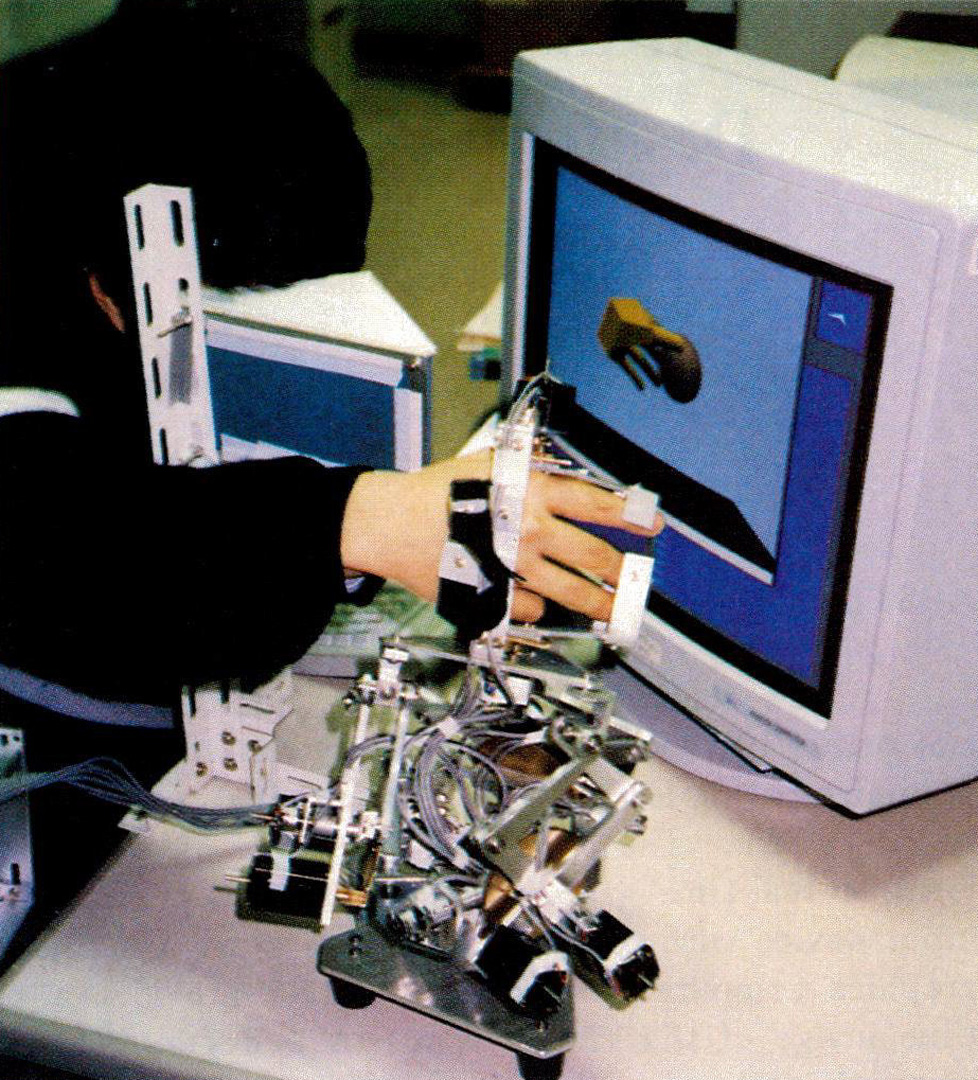“Adaptive mesh generation for global diffuse illumination” by Campbell and Fussell
Conference:
Type(s):
Title:
- Adaptive mesh generation for global diffuse illumination
Session/Category Title: Radiosity
Presenter(s)/Author(s):
Moderator(s):
Abstract:
Rapid developments in the design of algorithms for rendering globally illuminated scenes have taken place in the past five years. Net energy methods such as the hemicube and other radiosity algorithms have become very effective at computing the energy balance for scenes containing diffusely reflecting objects. Such methods first break up a scene description into a relatively large number of elements, or possibly several levels of elements. Energy transfers among these elements are then determined using a variety of means. While much progress has been made in the design of energy transfer algorithms, little or no attention has been paid to the proper generation of the mesh of surface elements. This paper presents a technique for adaptively creating a mesh of surface elements as the energy transfers are computed. The method allows large numbers of small elements to be placed at parts of the scene where the most active energy transfers occur without requiring that other parts of the scene be needlessly subdivided to the same degree. As a result, the computational effort in the energy transfer computations can be concentrated where it has the most effect.
References:
1. Baum, Daniel R., Holly E. Rushmeier and 3ames M. Winget, Improving R~diosity Solutions Through the Use of Analytically Determined Form-Factors, Computer Graphics (SIGGRAPH ’89 Proceedings), Vol. 23, No. 3, July 1989, pp. 325-334.
2. Chin, Norman and Steven Feiner, Near Real-Time Shadow Generation Using BSP Trees, Computer Graphics (SIGGRAPH ’89 Proceedings), Vol. 23, No. 3, July 1989, pp. 99-106.
3. Cohen, Michael F. and Donald P. Greenberg, A R~- diosity Solution for Complex Environments, Computer Graphics (SIGGRAPH ’85 Proceedings), Vol. 19, No. 3, July 1985, pp. 31-40.
4. Cohen, Michael F., Donald P. Greenberg, David S. Immel and Philip J. Brock, A Radiosity Solution for Complex Environments, IEEE Computer Graphics and Applications Vol. 6, No. 3, March 1986, pp. 26-35.
5. Cohen, Michael F., Shenchang Chen, John. Wallace, Donald P. Greenberg, A Progressive Refinement Approach to Fast Radiosity Image Generation, Computer Graphics (SIGGRAPH ’88 Proceedings), Vol. 22, No. 4, August 1988, pp. 75-84.
6. Cook, Robert L., Thomas Porter, Loren Carpenter, Distributed Ray Tracing, Computer Graphics (SIG- GRAPH ’85 Proceedings), Vol. 19, No. 3, July 1985, pp. }11-120.
7. Fuchs, Henry, Zvi M. Kedem and Bruce Naylor, On Visible Surface Generation by A Priori Tree Structures, Computer Graphics (SIGGRAPH ’80 Proceedings), Vol. 14, No. 3, July 1980, pp. 124-133.
8. Goral, Cindy M., Kenneth E. Torrance, Donald P. Greenberg, and Bennett Battaile, Modeling the Interaction of Light between Diffuse Surfaces, Computer Graphics (SIGGRAPH ’84 Proceedings), Vol. 18, No. 3, July 1984, pp. 213-222.
9. Kajiya, Ja.mes T., The Rendering Equation, Computer Graphics (SIGGRAPtI ’86 Proceedings), Vol. 20, No. 4, August 1986, pp. 143-150.
10. Naylor, Bruce, A Priori Based Techniques for Determining Visibility Priority for 3-D Scenes, PhD Dissertation, University of Texas at Dallas, May, 1981.
11. Nishita, Tomoyuki and Eihachiro Nakamae, Continuous Tone Representation of Three-Dimensiort~l Objects Taking Account of Shadows and Interreflection, Computer Graphics (SIGGRAPH 85 Proceedings), Vol. 19, No. 3, July 1985, pp. 22-30.
12. Nishita, Tomoyuki, I. Ok~mura and Eihachiro Nakamae, Shading Models for Point and Linear Light Sources, ACM Transactions on Graphics, Vol. 4, No. 2, April 1985, pp. 124-146.
13. Siegel, Robert and John R. Howell, Thermal Radiation Heat Transfer, Hemisphere Publishing Corp., Washington DC, 198t.
14. Thibault, William and Bruce Naylor, Set Operations on Polyhedr~ Using Binary Sp~ce Partitioning Trees, Computer Graphics (SIGGRAPH 87 Proceedings), Vol. 21, No. 3, July 1987, pp. 153-162.
15. Wallace, John R., Kells A. Elmquist, El’ic A. Haines, A Ray Tracing Algorithm for Progressive Radiosity, Computer Graphics (SIGGRAPH ’89 Proceedings), Vol. 23, No. 3, July 1989, pp. 315-324.
16. Ward, Gregory J., Frances M. Rubinstein, Robert D. Clear, A Ray Tracing Solution for Ditfuse Interreflection, Computer Graphics (SIGGRAPH ’88 Proceedings), Vol. 22, No. 4, August 1988, pp. 85-92.
17. Whitted, Turner, An Improved Illumination Model for Shaded Display, Communications of the A CM, Vol. 23, No. 6, June 1980, pp. 343-349.





